At a glance, sea anemones might look like regular sea plants, but they’re very much alive. With soft tentacles that sway like petals in the water, these colorful creatures are actually animals that play an important role in the ocean. You’ll often find them hosting clownfish or sheltering tiny shrimp, while also hunting and forming surprising partnerships that keep the reef in balance.
In this guide, we’ll explore what they are, where they live, and why they’re such memorable encounters for divers.
What is a Sea Anemone?
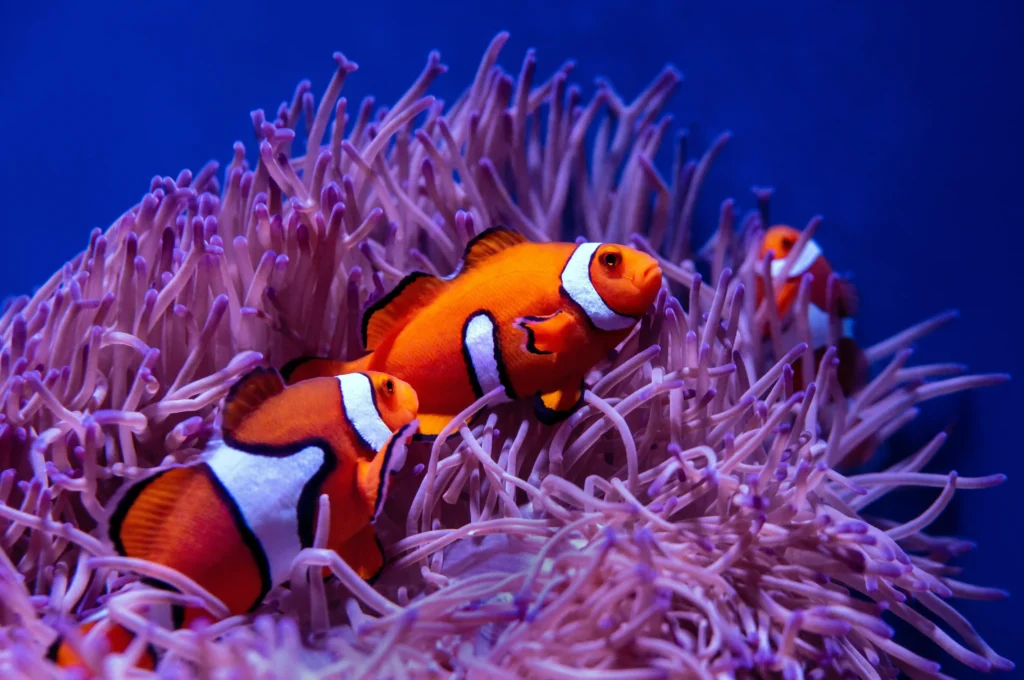
Sea anemones are marine invertebrates that are found in oceans around the world, often living on coral reefs, rocky outcrops, and sandy bottoms. They belong to the phylum Cnidaria and are classified under the order Actiniaria.
Each anemone has a simple body plan, but every part serves a purpose. At the center is a mouth, surrounded by tentacles lined with stinging cells called nematocysts. These tentacles help catch plankton and small fish drifting by. Their base, called the pedal disc, acts like a suction cup, keeping them steady even when currents get strong.
Despite their stillness, sea anemones are never boring. They’re home to clownfish, provide shelter for shrimps, and often become the center of attention for divers and underwater photographers. Once you spot one, you’ll start noticing the little world that lives around it.
Where Do Sea Anemones Live?
Sea anemones live in a wide range of marine habitats across the world’s oceans. They are most common in shallow coastal areas where sunlight and stable surfaces provide the right conditions for growth. Many species attach themselves to rocks, shells, or coral, while others anchor in sandy or muddy bottoms.
Although they are often associated with warm tropical waters, sea anemones also adapt to cooler regions and even the deep sea as long as the environment provides food and security. Their distribution depends on factors such as water movement, light levels, and the type of foundation available.
5 Best Dive Sites to Meet Sea Anemones

Sea anemones bloom in different ways depending on their environment, and each of these destinations offers a unique experience. From volcanic muck slopes to coral plateaus and current-swept reef walls, these are five of the best areas to see anemones in their natural settings:
- Lembeh Strait, Indonesia: Famous for muck diving, Lembeh is where anemones reveal their role as microhabitats. Shrimp, crabs, and juvenile fish hide among their tentacles, giving divers endless macro scenes to explore.
- Cape Kri, Raja Ampat: This site is renowned for its staggering biodiversity, with surveys noting more than 370 fish species on a single dive. In these nutrient-rich currents, sea anemones thrive in large colonies that splash the reef with color and movement, while dense schools of fish weave constantly around them.
- Melissa’s Garden, Raja Ampat: A shallow reef plateau with coral gardens that stretch as far as the eye can see. Anemones here form bright clusters, often home to clownfish, and create striking contrasts that are perfect for wide-angle photography.
- Misool, Southern Raja Ampat: Remote and untouched, Misool’s reefs are alive with soft corals and blooming anemones. Their presence adds both color and shelter, making the reef walls feel alive with constant movement.
- Blue Corner, Palau: One of the most iconic reef dives in the world, Blue Corner combines strong currents with thriving coral life. Large anemones cling to the reef edge, their tentacles streaming in the flow, often with clownfish darting in and out for protection.
You might also like: Types of Diving: Explore the Most Popular Dive Styles
How Do Sea Anemones and Other Creatures Live Together?
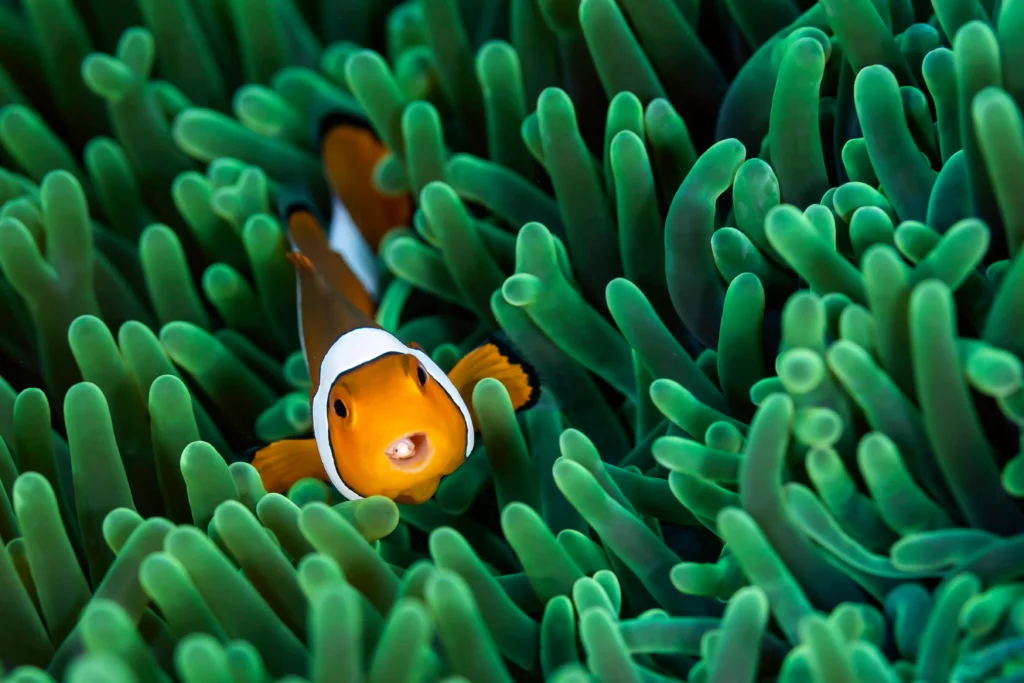
What makes sea anemones fascinating isn’t only their appearance but the partnerships they form. Many marine creatures depend on them for shelter and protection. In return, anemones gain food, cleaning, or extra energy, creating one of nature’s most balanced exchanges.
The most famous partnership is with clownfish. Protected from predators by the anemone’s stinging tentacles, the clownfish return the favor by defending their host and dropping food scraps that the anemone absorbs.
Other creatures, such as shrimp and crabs, often join in too. These creatures live among the tentacles, using the anemone as a safe hiding place while helping to clean the area of parasites and debris, and adding another layer of activity around the host anemone.
6 Species of Sea Anemones You May Encounter in the Indo-Pacific Sea
There are several different forms of sea anemones, each with its own unique look and behavior. Some stand tall with bright tentacles, while others spread wide across the sand like a carpet. From bubbling tentacles to giant discs that shelter whole families of clownfish, here are some of the most fascinating sea anemones you might meet in the Indo-Pacific:
1. Magnificent Sea Anemone (Heteractis magnifica)
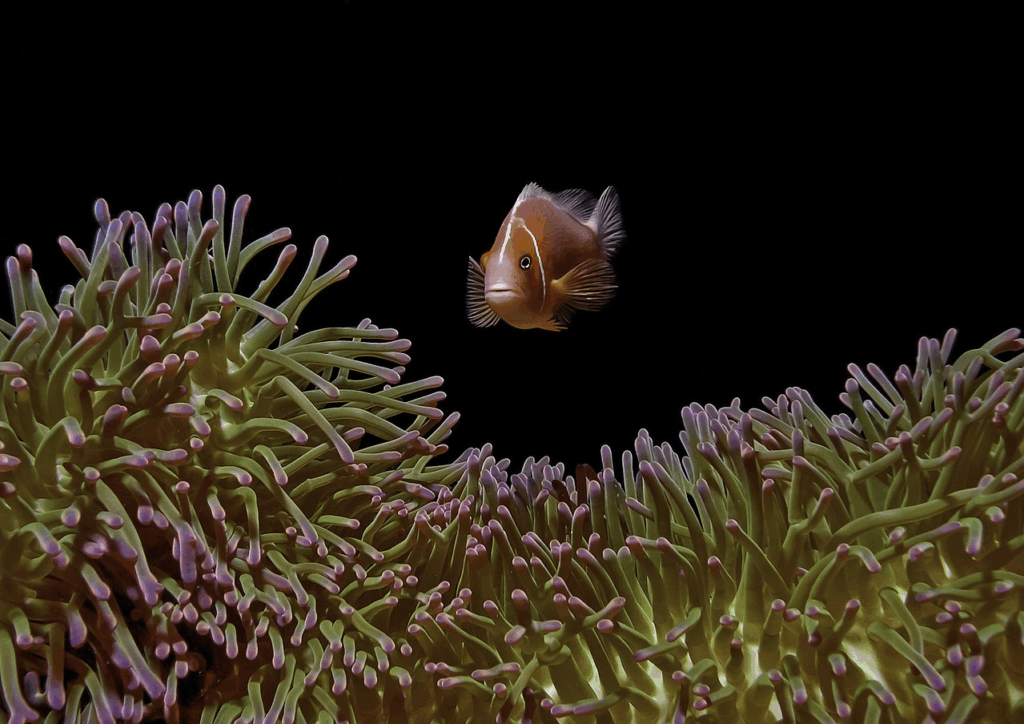
The magnificent sea anemone lives up to its name with bold colors and impressive size. Its tentacles often glow in shades of red, purple, or green, making it one of the easiest anemones to spot on a reef. Multiple clownfish species frequently call it home, darting in and out of the tentacles in a lively display that divers never forget.
2. Bubble-Tip Anemone (Entacmaea quadricolor)
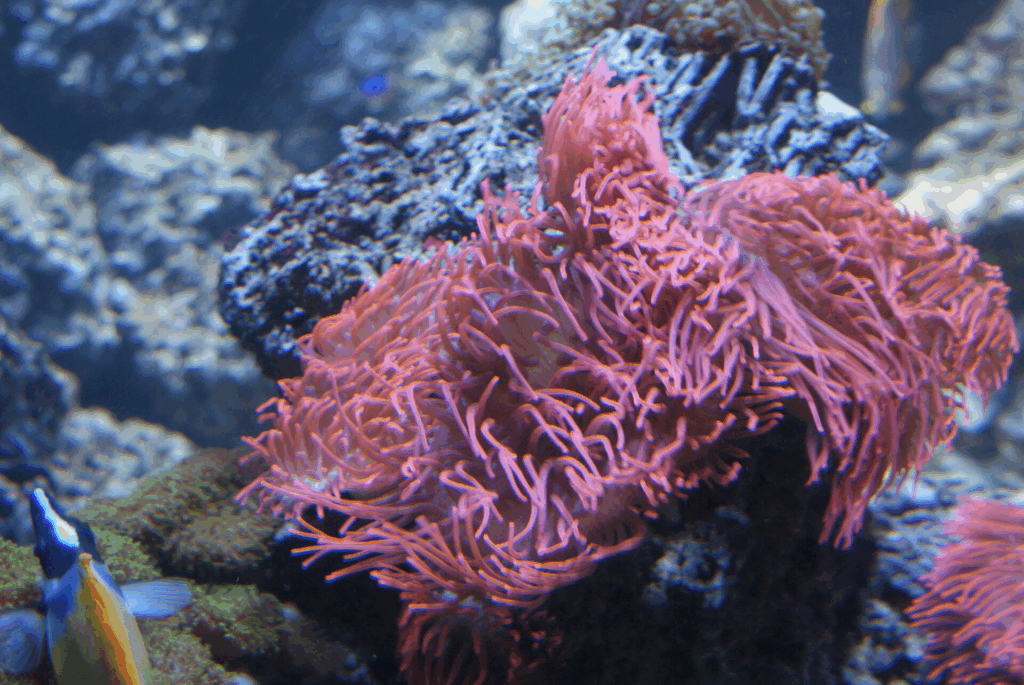
The bubble-tip anemone is instantly recognizable thanks to its tentacles, which often swell into rounded bubbles when the animal is relaxed and healthy. Found across many Indo-Pacific reefs, this species is a favorite among divers and photographers alike. It often shelters different clownfish species, making it a reliable subject for both wide-angle reef shots and close-up macro work.
3. Giant Carpet Anemone (Stichodactyla gigantea)
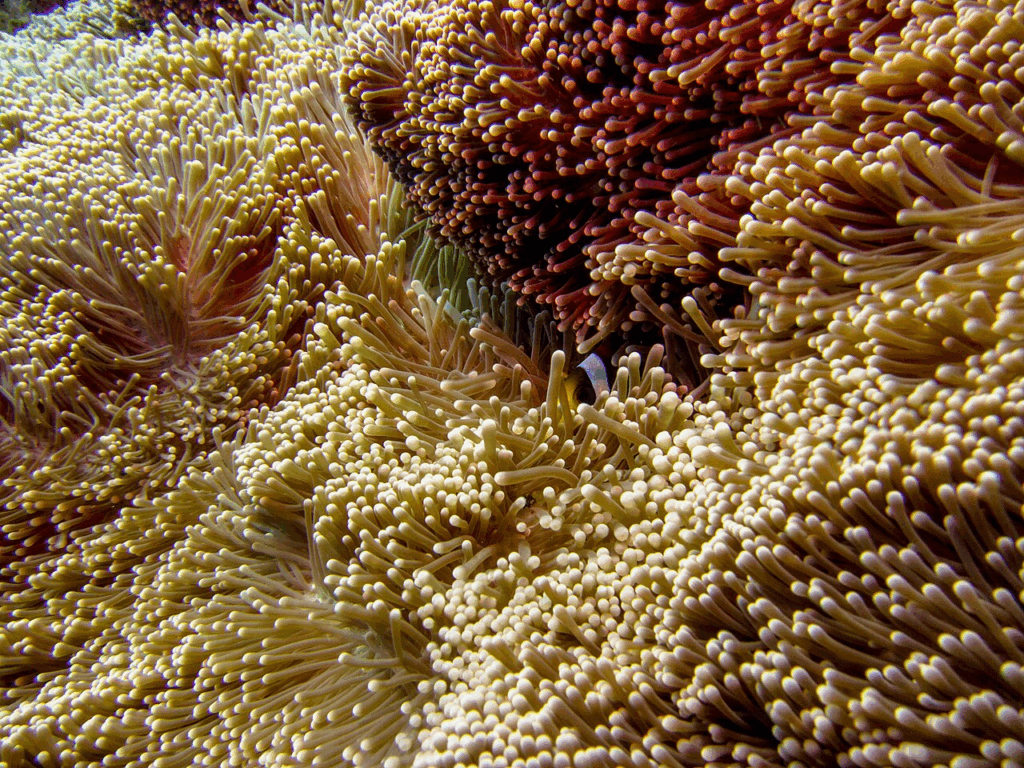
Spreading wide across sandy bottoms or rubble patches, the giant carpet anemone is a true hub of marine activity. Its surface can host multiple clownfish, as well as shrimp and crabs that rely on its protection. For macro photographers, this creates a scene full of life where every glance reveals another detail worth capturing.
4. Sebae Anemone (Heteractis crispa)
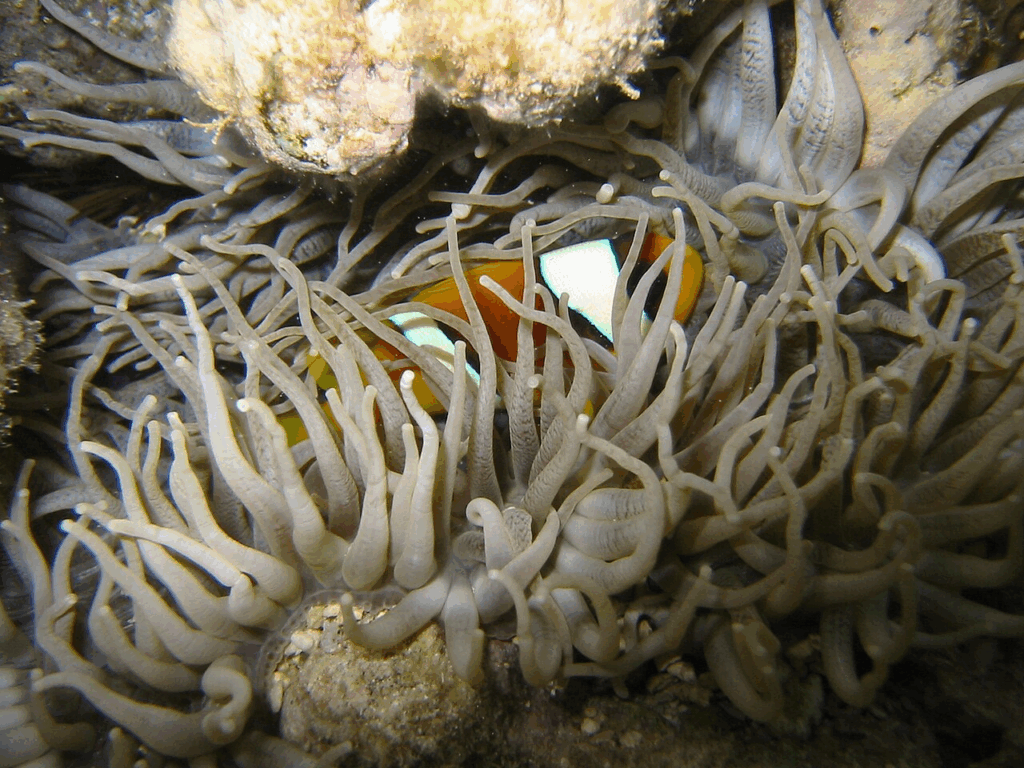
The sebae anemone is known for its long, flowing tentacles that wave gracefully in the current. These tentacles often come in shades of white, purple, or green, creating a dramatic look that adds depth to reef landscapes. Clownfish frequently nest among their arms, completing a classic underwater picture that divers often hope to encounter.
5. Adhesive Sea Anemone (Cryptodendrum adhaesivum)

The adhesive sea anemone stands out with its unusual, disc-like shape and sticky tentacles. Its textured appearance has earned it the nickname “pizza anemone,” a fitting description for its flat, patterned surface. While it may not host as many clownfish as other anemones, it remains a fascinating subject for divers who enjoy spotting unique reef residents.
6. Merten’s Carpet Anemone (Stichodactyla mertensii)
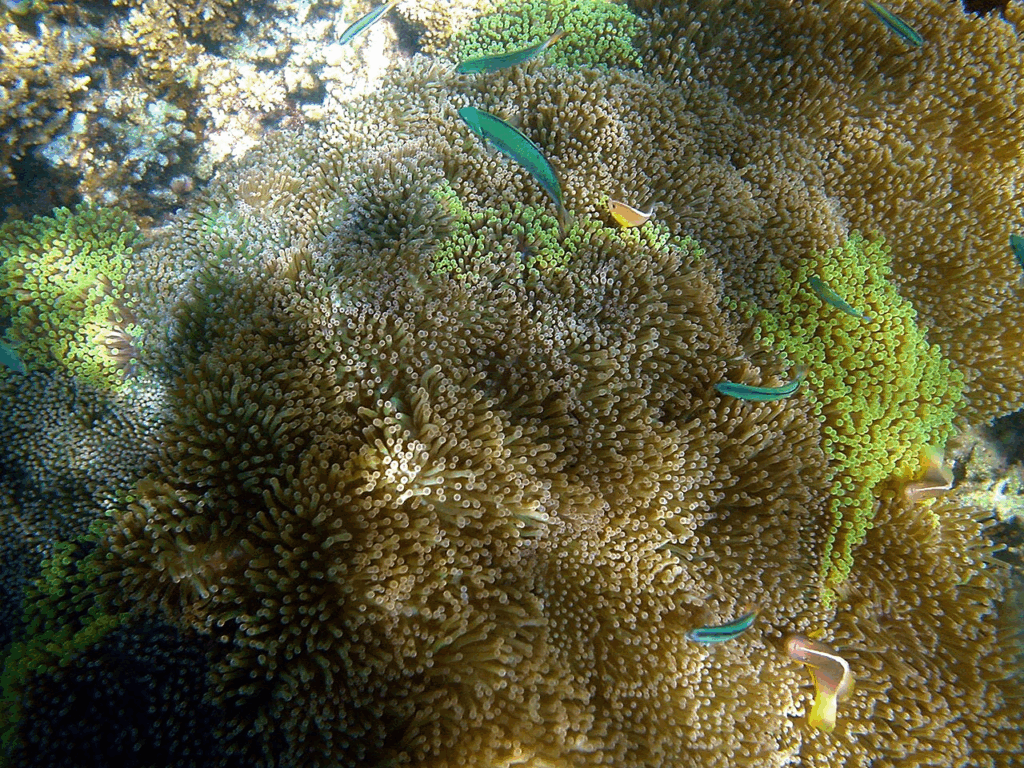
As the largest of all host anemones, Merten’s carpet anemone makes a powerful impression. It can grow to cover large areas of rock or coral, often creating space for whole communities of clownfish and small crustaceans. Its sheer size, combined with the activity of its residents, makes it one of the most memorable encounters for divers exploring Indo-Pacific reefs.
Are Sea Anemones in Danger?
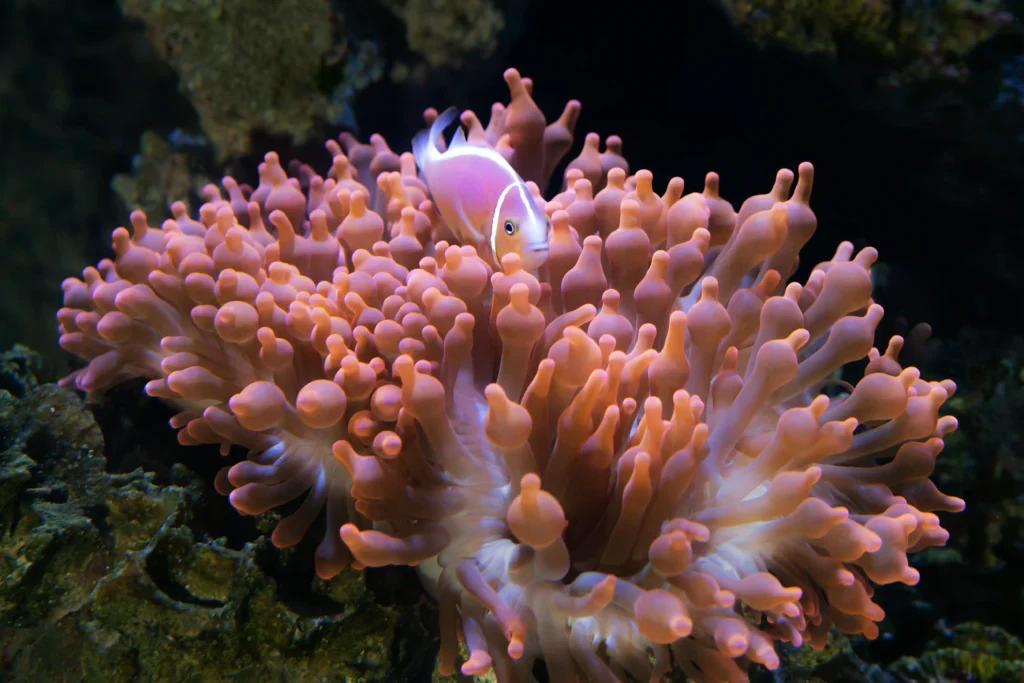
Sea anemones are not classified as endangered, but they do face several threats that affect their survival. Climate change is one of the biggest challenges, as rising sea temperatures can cause bleaching when anemones lose the algae they depend on for energy. This makes them weaker and more vulnerable, similar to what happens with corals.
Human activity creates additional risks. Overcollection for the aquarium trade reduces their numbers in the wild, while destructive fishing methods and careless anchoring damage the habitats they rely on. Although these pressures don’t place them on the endangered list, they still impact the long-term health of anemone populations.
Related reads: Ethical Diving: A Diver’s Role in Protecting the Ocean
Dive Alongside Sea Anemones with Solitude
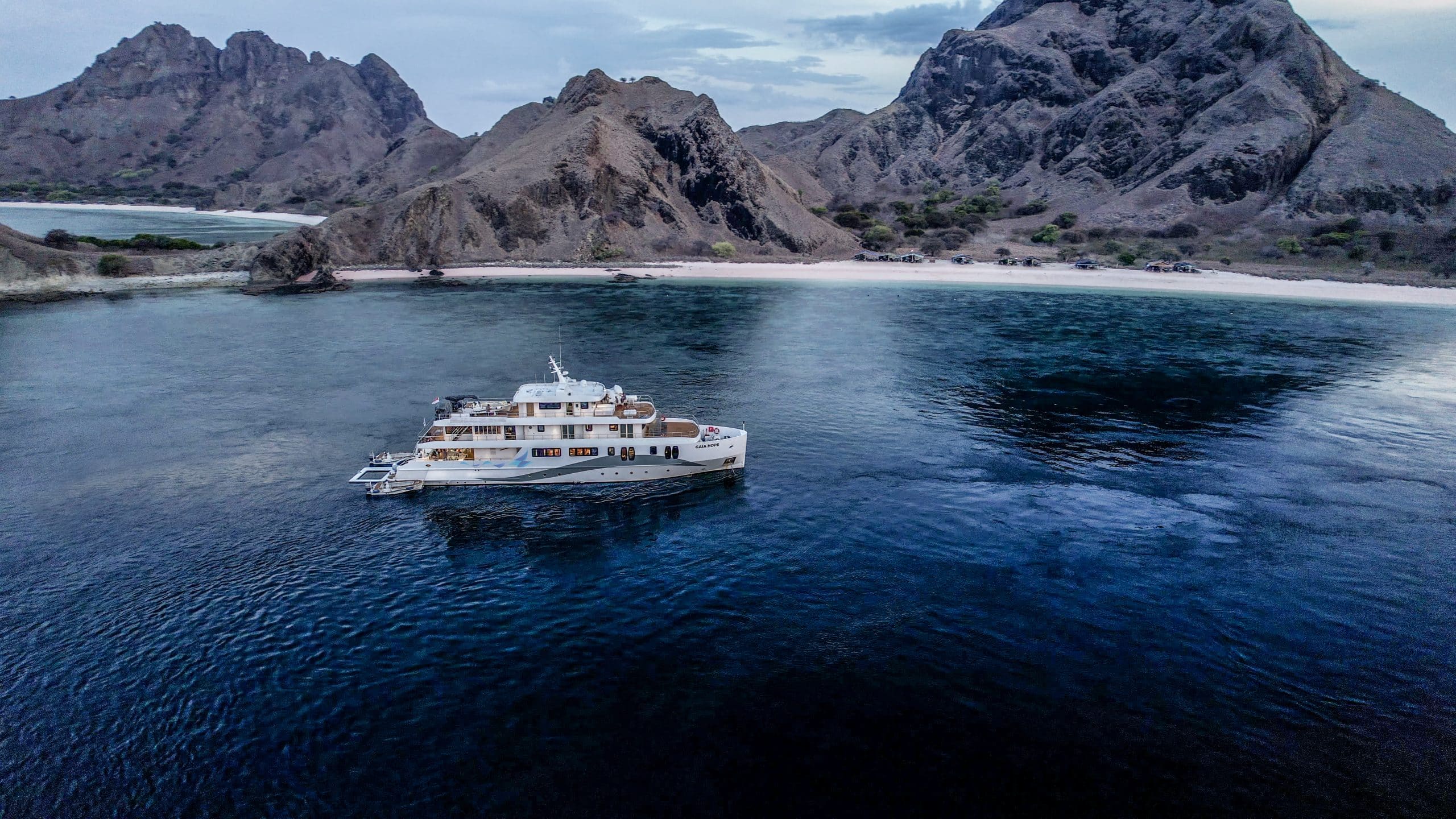
Sea anemones are not only beautiful but vital to the reef, offering shelter, food, and balance to other creatures. From their partnerships with sea creatures to their role in healthy ecosystems, they remind us how much life depends on connection. Meeting them underwater is a special experience, and diving responsibly ensures these encounters remain for years to come.
With Solitude World, your diving experience will always be accompanied by our PADI-certified guides, ensuring a safe, smooth, and stress-free dive with anemones. After a day of exploring the underwater vibrant sites, you will return to a freshly prepared meal in comfort. It’s the perfect way to experience both the wonders of the reef and the warmth of coming home.
Book your next diving adventure with Solitude today and experience the reef like never before!